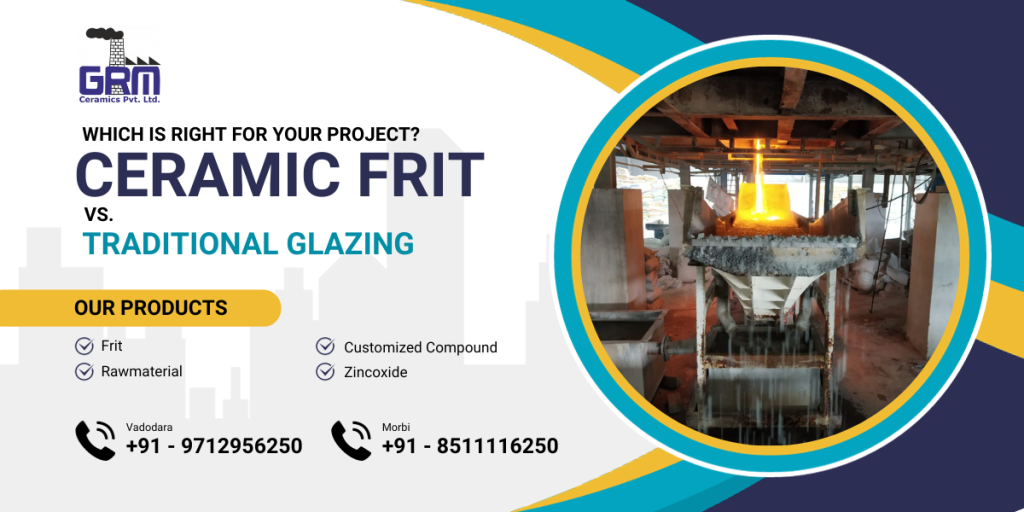
When it comes to enhancing glass and ceramic surfaces, two methods stand out: ceramic frit and traditional glazing. Both techniques offer unique advantages, but which one is the right choice for your project? In this blog, we’ll delve into the characteristics of ceramic frit and traditional glazing to help you make an informed decision that aligns perfectly with your design and functionality requirements.
Ceramic Frit:
A Modern Marvel:
Ceramic frit is a contemporary approach to enhancing glass and ceramic surfaces. It involves applying a specially formulated glass paste to the surface, which is then fused to the substrate through a high-temperature firing process. Ceramic frit offers several distinct advantages:
Design Versatility:
Ceramic frit provides extensive design freedom. From intricate patterns to subtle textures, it allows for customization, enabling you to achieve your desired aesthetic.
Durability:
Frit coatings are highly durable, resistant to UV radiation, weathering, and wear. This makes them ideal for both indoor and outdoor applications, ensuring long-lasting beauty.
Privacy and Light Control:
Frit can be used to control the level of privacy and light transmission in a space. The opacity of the coating can be tailored to your specific needs.
Energy Efficiency:
Some frit designs can help regulate indoor temperatures by reducing solar heat gain, which can lead to energy savings and improved comfort.
Safety:
Frit coatings are designed to meet safety standards, ensuring the protection of occupants in case of breakage.
Traditional Glazing:
Time-Tested TraditionTraditional glazing, which involves applying a liquid glaze to ceramic surfaces before firing, has been the standard for centuries. While it may lack some of the design versatility of ceramic frit, it offers its own set of benefits:
Time-Tested Aesthetic:
Traditional glazing techniques have a timeless appeal, often associated with classic ceramic artistry. It’s an excellent choice for projects that aim for a more traditional or vintage look.
Smooth and Glossy Finish:
Traditional glazes tend to produce a smooth, glossy finish, which can be especially attractive in applications like ceramic dinnerware or tiles.
Custom Artistry:
Skilled artisans can create hand-painted designs and intricate artwork on traditional glazed surfaces, adding a unique, artisanal touch to the final product.
Variety of Applications:
Traditional glazing is commonly used in pottery, ceramics, and tile manufacturing, offering a diverse range of applications.
Which Is Right for Your Project?
The choice between ceramic frit and traditional glazing largely depends on your project’s specific requirements and design objectives. Here are some factors to consider:
Aesthetic Preference:
If your project demands a modern, highly customizable appearance, ceramic frit may be the preferred choice. For traditional or artisanal aesthetics, traditional glazing could be the way to go.
Functionality:
Consider the functional requirements of your project. Do you need UV resistance, safety features, or energy efficiency? Ceramic frit may excel in these areas.
Customization:
If your design requires intricate, hand-painted details, traditional glazing offers a more artisanal approach.
Application:
What is the intended use of your product? Ceramic frit is versatile, making it suitable for a wide range of applications, while traditional glazing is often favored in pottery and ceramics.
In conclusion, the decision between ceramic frit and traditional glazing is a matter of balancing aesthetics, functionality, and application. Both techniques have their place in the world of glass and ceramic enhancement, and the right choice depends on the unique needs of your project. Careful consideration of these factors will lead you to the solution that best serves your goals, resulting in a beautiful and functional end product.

